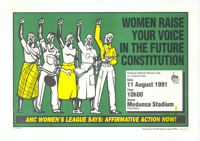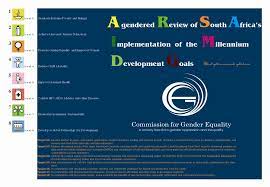
The lesson for the makers of the Egyptian Women’s Charter is that the South African charter came up short not for what it contained but for what it left out. In capitalist societies such as Egypt and South Africa, the state concentrates power among few, capital concentrates wealth, and both these institutions play a crucial role in maintaining the patriarchal power of men over women, to the extent of nullifying legal victories as we have seen in South Africa. Historically the socialist movement fought to end capital as an institution, and anarchism fought to end the state, while feminism or women’s movements veered between taking on these struggles and maintaining neutrality. The South African Women’s Charter stayed silent on whether capital and the state are compatible with the liberation of women. The present role of these institutions in imposing increasing misery on women arguably indicates that such a silence in the Egyptian Women’s Charter would be a mistake.
Inserting into the Women’s Charter a commitment to struggle against capital and the state would not necessarily spell the end for these institutions in Egypt, and neither would it necessarily have done so in South Africa in 1994. However, this is precisely where the South African experience speaks the loudest. When the demands of the Women’s Charter became part of South African law and policy from 1994 onwards, the Women’s National Coalition disbanded and its leading members took up positions in political parties and the state. When from 1996 the neo-liberal onslaught came, there was no national women’s movement to oppose it. Up to today South Africa has no national women’s movement, which is part of the reason for the confidence behind the reassertion of patriarchy. So no, a declaration in a charter will not end capital and the state, and yes, such a declaration might scare of those activists with a strong attachment to capital and the state, but it will provide a rallying point for a women’s movement that cannot be neutralized by paper concessions. It is in such a women’s movement, and not in capitalist laws and policies, that women in Egypt will find the best protection against the marginalization the men in charge of the state and business surely have planned for them.
Egypt today, being in a transitional phase, offers vast scope for a women’s movement not just to mobilize political pressure against patriarchy and its supporting institutions, but to launch direct actions and take over significant resources to dedicate to the liberation of women. With the police discredited and the military nervous about antagonizing the people, an action to take over, for example, a hotel owned by a multi-national or by the elite of the Mubarak era and use it as a women’s shelter, communal kitchen or feminist school has more chance of succeeding than at any other time in the recent past. It is such direct actions that will enable the Egypt women activists to transcend the dependence on the state that has proved so terribly costly for their South African counterparts. Of course women activists have to be prepared politically to take such actions. A giant step in such preparation would be to place the necessity for direct actions in a prime spot within the Egyptian Women’s Charter.
(This post originally appeared here: http://permanentrebel.blogspot.com/2011/09/making-womens-charters-in-egypt-and_14.html. Thanks to Ronald for the collaboration!)
(Photo Credit: Women’s International League for Peace and Freedom)

